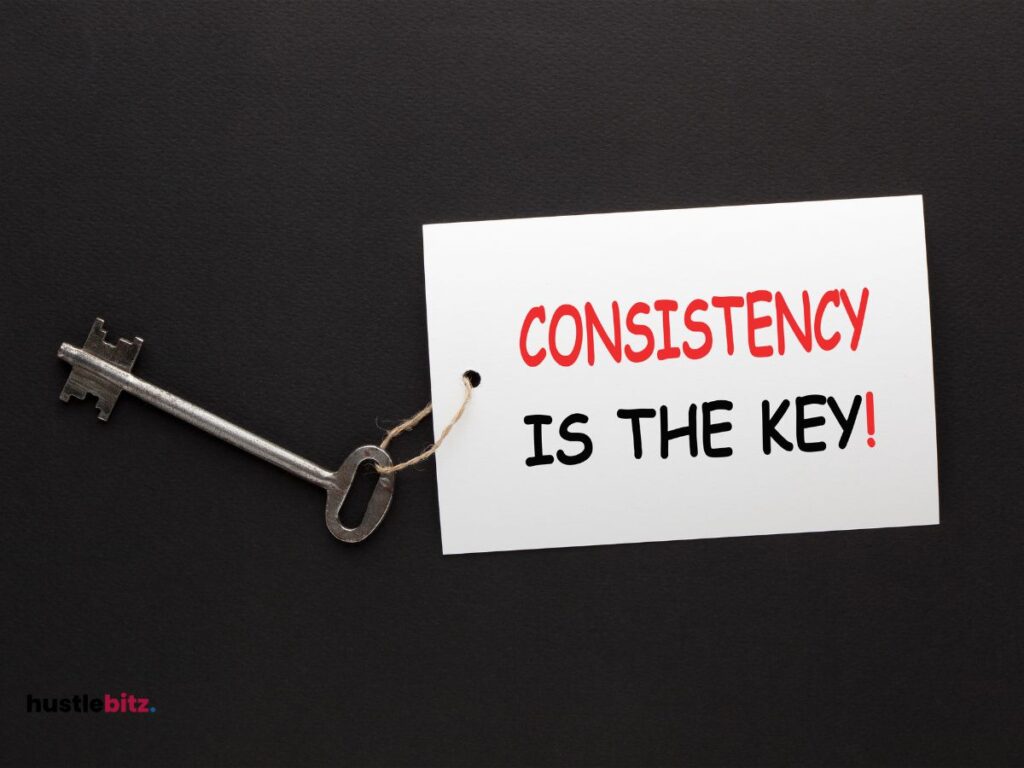Getting started with task management involves understanding its fundamental principles. Begin by defining your tasks clearly and categorizing them based on urgency and importance. Use tools like the Eisenhower Matrix to prioritize effectively. Create a comprehensive task list, either digitally or on paper, to enhance visibility and focus. Embrace time management techniques such as the Pomodoro Method to structure your work sessions. Additionally, break tasks into manageable parts and set deadlines to maintain momentum. By implementing these strategies, you’ll build a strong foundation for effective task management and discover various techniques to further enhance your workflow.
Key Takeaways
- Start by defining and categorizing tasks based on urgency and importance to improve organization and focus.
- Utilize techniques like the Pomodoro Technique and Eisenhower Matrix to enhance time management and prioritization.
- Create a comprehensive task list that aligns with your goals and review it regularly for adaptability.
- Choose the right task management tools that suit your workflow, evaluating features and user reviews for effectiveness.
- Break larger tasks into manageable milestones and set deadlines to maintain momentum and track progress effectively.

Understanding Task Management

Understanding task management involves recognizing the systematic approach to organizing, prioritizing, and executing tasks effectively to enhance productivity and achieve goals. At its core, task management begins with task definition, which clarifies what needs to be accomplished.
Once tasks are identified, task categorization allows for grouping them based on urgency, importance, or type, facilitating better organization. Effective task delegation is critical in ensuring that responsibilities are distributed according to team members’ strengths and availability. This not only boosts efficiency but also fosters task collaboration, where team members work together toward common objectives.
To maintain oversight, task tracking systems are essential, providing real-time updates on progress and enabling quick adjustments when necessary. Task evaluation is equally important, as it involves assessing the completion and quality of tasks, which informs future planning and helps identify areas for improvement.
In this process, maintaining task motivation is vital; understanding individual motivations can enhance engagement and productivity. Moreover, task flexibility allows for adjustments in response to changing circumstances, ensuring that goals remain achievable even in dynamic environments.
Task alignment ensures that all activities are directed toward overarching organizational objectives, promoting a cohesive approach to achieving goals. Finally, incorporating task sustainability principles aids in long-term planning, ensuring that resources and efforts are utilized effectively for future tasks.
The Importance of Prioritization

Prioritization is a crucial skill in task management, enabling individuals and teams to focus their efforts on the most impactful activities that align with their goals. By employing effective prioritization methods, one can streamline tasks based on urgency assessment and importance, ensuring that critical objectives are met first. This process begins with thorough task evaluation, which involves determining which tasks contribute most significantly to overarching goals.
Goal alignment is essential in this context, as it helps to clarify which tasks should take precedence. By aligning tasks with specific goals, resources can be allocated more effectively, optimizing time and effort. This thoughtful resource allocation is crucial for maximizing productivity and ensuring that teams are not overwhelmed by less significant tasks.
Additionally, employing sound decision-making strategies can facilitate more efficient task management. By utilizing tools such as the Eisenhower Matrix or MoSCoW method, individuals can categorize tasks based on urgency and impact, leading to efficiency improvement across the board. This strategic approach also aids in outcome forecasting, allowing for better anticipation of results and impacts.
Moreover, effective prioritization contributes to stress reduction and focus enhancement. When individuals clearly understand their priorities, they are less likely to feel overwhelmed by their workload, enabling a calmer, more focused work environment.
Ultimately, mastering the art of prioritization not only fosters productivity but also enhances overall task management effectiveness, laying the groundwork for sustained success in any endeavor.
How to Prioritize Tasks: A Beginner’s Guide

Effectively prioritizing tasks involves a systematic approach that enables individuals to distinguish between what is urgent and what is important, ultimately fostering enhanced productivity and goal achievement.
A useful tool for this process is the task matrix, which categorizes tasks based on their urgency and importance. This enables you to focus on high-priority items that align with your personal priorities and long-term goals.
To begin, identify tasks that are both urgent and important, as these should take precedence.
Next, assess tasks that are important but not urgent; these can significantly contribute to goal alignment over time.
Tasks that are urgent but not important may be delegated, utilizing delegation strategies to reduce your workload and manage stress effectively.
Finally, consider tasks that are neither urgent nor important; these can often be eliminated or postponed.
Incorporating daily reviews into your routine can enhance your prioritization skills. During these reviews, reflect on your progress and adjust your priorities based on project timelines and evolving objectives.
Additionally, employing motivation techniques, such as setting small rewards for task completion, can help maintain focus and energy.
Creating a Task List: Tips for Getting Started

Creating a comprehensive task list is essential for organizing responsibilities and ensuring that important activities are not overlooked. A well-structured task list can enhance task visibility and help individuals align their daily routines with overarching goals. To effectively create your task list, consider categorizing tasks into specific task categories such as work, personal, and urgent tasks. This segmentation aids in prioritization and streamlines focus.
When choosing between digital vs. analog formats for your task list, consider your personal preferences and lifestyle. Digital tools often offer features like collaborative lists, which can be particularly beneficial for team projects, while analog options, such as notebooks, can provide a more tactile experience. Regardless of the format, maintaining a review frequency—daily or weekly—ensures you stay on track and can adapt your strategies as needed.
Incorporate motivational techniques to enhance engagement with your task list. Visual reminders, progress tracking, and setting achievable milestones can significantly boost motivation. Additionally, understanding the checklist benefits, such as reducing cognitive load and fostering a sense of accomplishment, can reinforce the habit of maintaining a task list.
Lastly, continuously align your tasks with your goals. This alignment not only enhances focus but also ensures that your efforts are directed toward meaningful outcomes. By employing these strategies, you can create an effective task list that enhances productivity and supports your personal and professional growth.
Time Management Techniques for Beginners

Building on the foundation of a well-structured task list, mastering time management techniques is vital for maximizing productivity and achieving your goals.
One effective method is the Pomodoro Technique, which encourages focused work sessions of 25 minutes, followed by short breaks. This approach enhances concentration and mitigates burnout, making it easier to tackle tasks efficiently.
Another valuable tool is the Eisenhower Matrix, which helps prioritize tasks based on their urgency and importance. By categorizing tasks into four quadrants, you can clearly identify what requires immediate attention versus what can be scheduled for later or delegated.
Time Blocking is another strategy that involves allocating specific time slots in your calendar for different tasks. This method not only enhances organization but also promotes disciplined Daily Planning and Weekly Review, allowing you to reflect on completed tasks and adjust your future plans.
Incorporating Mind Mapping can facilitate clearer thinking and goal setting, enabling you to visualize connections between tasks and objectives.
Additionally, Energy Management plays a crucial role; aligning your most demanding tasks with your peak energy levels can significantly enhance productivity.
Lastly, consider using Focus Sessions and Task Batching, which group similar tasks together to minimize distractions and streamline efforts. By embracing these techniques, you can cultivate a robust time management system that supports sustained productivity and goal achievement.
Choosing the Right Task Management Tools
Selecting the appropriate task management tools is essential for streamlining workflows and enhancing productivity. The right tools can significantly impact your ability to organize tasks, prioritize effectively, and collaborate with team members. When considering tool selection, it is crucial to conduct a thorough feature comparison, evaluating aspects such as user interface, software integration, and collaboration options.
To assist in your decision-making process, consider the following table that summarizes key features of popular task management tools:
| Tool Name | Pricing Models | Mobile Accessibility |
| Tool A | Free/Premium Plans | Yes |
| Tool B | Subscription-Based | Yes |
| Tool C | One-Time Purchase | Limited |
Furthermore, assess customer support and availability of trial periods to ensure that you can test the tool before committing financially. User reviews are also invaluable as they provide insights into real-world usability and satisfaction. Look for feedback on how well the tool integrates with existing software and its overall effectiveness in enhancing productivity.
Ultimately, the right task management tool will cater to your specific needs, allowing for seamless organization and efficient collaboration. By prioritizing features such as those mentioned above, you can make an informed choice that aligns with your workflow and enhances your task management capabilities.
Breaking Down Tasks: How to Make Your Work More Manageable

After choosing the right task management tools, the next step is to break down tasks into smaller, more manageable components to enhance productivity and reduce overwhelm. This process, known as task breakdown, allows you to approach larger projects with clarity and focus. By dividing a project into manageable steps, you can maintain goal alignment and ensure effective resource allocation.
To effectively break down tasks, consider the following strategies:
- Task Categorization: Group similar tasks together to streamline your workflow. This allows for efficient workload balancing and minimizes context switching.
- Milestone Setting: Establish clear milestones within your project. This not only provides direction but also facilitates progress tracking, enabling you to celebrate small victories along the way.
- Effective Delegation: If working within a team, identify tasks that can be delegated. This fosters collaboration and ensures that everyone contributes to the overall objective.
- Feedback Loops: Create opportunities for regular feedback throughout the project. This helps in adjusting strategies as necessary, ensuring that the team stays aligned with the goals.
Setting Deadlines: Keeping Your Tasks on Track
Establishing deadlines is crucial for maintaining momentum and ensuring that tasks are completed within a specified timeframe. Effective deadline strategies can enhance your task scheduling by providing a structured approach to managing your workload. One method to achieve this is through time blocking, which allocates specific periods for each task, thereby fostering focus and reducing distractions.
Incorporating accountability partners into your routine can further bolster your commitment to deadlines. By sharing your goals with someone who holds you accountable, you increase your chances of adhering to set timelines. Additionally, it’s essential to assess the urgency of each task, allowing you to prioritize effectively and make informed decisions about deadline flexibility when necessary.
Milestone setting is another useful technique, breaking larger projects into smaller, manageable sections. This not only simplifies progress tracking but also provides opportunities to celebrate achievements, which can enhance motivation. Employing motivation techniques, such as rewarding yourself for meeting deadlines, can also improve your productivity.
Establishing feedback loops is vital for refining your approach to deadline management. Regularly reviewing completed tasks allows you to evaluate what strategies worked and what needs adjustment. By being adaptable and continuously improving your methods, you can create a more efficient task management system.
Ultimately, setting and maintaining deadlines fosters discipline, enhances productivity, and paves the way for successful task completion, ensuring that you stay on track in achieving your goals.
Overcoming Common Task Management Challenges

While task management can significantly enhance productivity, it often presents various challenges that individuals must navigate to achieve their goals effectively. Common obstacles include task overload, procrastination, and distractions that can derail progress. Addressing these challenges requires a proactive approach and the adoption of specific strategies.
To overcome these hurdles, consider the following techniques:
- Procrastination Strategies: Break tasks into smaller, manageable parts to make them less daunting, and set short deadlines to create urgency.
- Distraction Management: Identify triggers that lead to distractions and implement solutions, such as designated workspaces or time-blocking techniques.
- Motivation Techniques: Establish a reward system for completing tasks to maintain enthusiasm and drive.
- Accountability Partners: Collaborate with a colleague or friend to share goals and progress, fostering a sense of responsibility.
In addition to these techniques, it is essential to align tasks with overarching goals to ensure relevance and purpose.
Effective workflow optimization can mitigate decision fatigue and enhance productivity. Delegation tips can also help manage task overload; entrust specific tasks to others to maintain focus on high-priority items.
Furthermore, incorporating stress reduction methods, such as mindfulness or regular breaks, can bolster overall well-being.
Maintaining Consistency

Consistency in task management is crucial for achieving long-term goals and fostering a productive work environment. To maintain consistency, individuals must adopt effective strategies that promote habit formation and routine building. Establishing daily rituals can provide a structured approach, ensuring that tasks are tackled regularly.
Utilizing progress tracking methods helps individuals visualize their accomplishments, while reward systems can serve as powerful motivation techniques. When people see tangible results, their self-discipline strategies become more robust, creating a positive feedback loop that encourages further productivity.
Engaging with accountability partners can amplify these efforts. Sharing goals with someone else not only enhances commitment but also fosters a sense of community. When paired with goal alignment, individuals are more likely to stay aligned with their overarching objectives, thus enhancing their focus.
Additionally, incorporating these elements into a manageable framework can evoke emotional connections to the work being done. Below is a table illustrating the key components that contribute to maintaining consistency:
| Strategies | Emotional Impact |
| Habit Formation | Builds a sense of achievement |
| Accountability Partners | Creates a supportive network |
| Reward Systems | Enhances motivation and joy |
Final Thoughts
Starting with task management can feel overwhelming, but with the right strategies and tools, it becomes a powerful way to enhance productivity and achieve your goals. By prioritizing tasks, breaking them down into manageable steps, and using time management techniques like time blocking, you can create a structured approach to your work. Choosing the right tools and maintaining consistency are also key to staying on track. Remember, task management is not just about managing your time; it’s about managing your focus and energy effectively. With a solid foundation, you can overcome common challenges and build a workflow that supports your success in both the short and long term.




